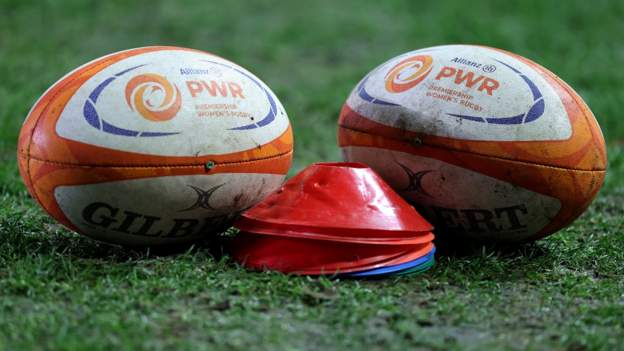World Rugby is considering the use of a smaller ball in the women’s game.
The global governing body is collecting training and playing data on the size 4.5 ball. which is about 3% smaller and 3-4% lighter than a typical size 5 ball.
Lindsay Starling, science and medical manager at World Rugby, said “typically an adult male hand is 10% larger” than that of an adult female.
“The women’s playing community is quite divided,” Starling said.
“There’s a big proportion of individuals in this community that think and feel that retaining the use of the same equipment in the men’s game is important.
“So World Rugby have committed to trialling what actually happens if women play with the smaller ball.”
World Rugby confirmed that playing data was gathered at the Women’s Under-18s Six Nations, where sides played with a size 4.5 ball this month, while training data was gathered from three Celtic Challenge sides.
The outputs on this data will be shared when available.
Starling said the smaller ball would be in “better proportion to the female athletes’ hands” and could result in “numerous positive benefits”.
The theory is that by being in better proportion to the player the ball would be easier to hold, there would be fewer knock-ons in contact and it would increase passing speed and accuracy.
This could then create a faster game with fewer rucks and scrums, while kicking and lineout throws might also mean improvements in accuracy and distance.
Changes to equipment in women’s sport is not a new concept. In basketball, the WNBA uses a ball one inch smaller in circumference than that used in the NBA. The 28.5-inch ball is also used by women and girls from age 12 upwards and boys aged 12-14.
In football, an increase in female players suffering ACL injuries is improving the focus on the development of football boots for women.
Earlier this week, the Rugby Football Union confirmed that £12.3m already committed by the Department for Digital, Culture, Media and Sport will be used to help more women and girls get involved in rugby as part of their Impact ’25 programme.
Analysis
Women’s rugby can forge its own path, whether that be in governance, tournament structure, finance, game experience, facilities or equipment. Some ideas could change the face of the sport for the greater good. Others will fall by the wayside as non-starters.
There is always going to be resistance to change whenever a concept like a smaller ball is discussed – this is certainly not the first time. Some who have trialled a smaller ball much preferred the experience and think it improved their game. Others are not keen.
It does seem a wasted opportunity to be closed off to any new data and research opportunities. They could potentially benefit future generations of players.
This includes if the data shows a smaller ball is not good for the women’s game going forward.




















